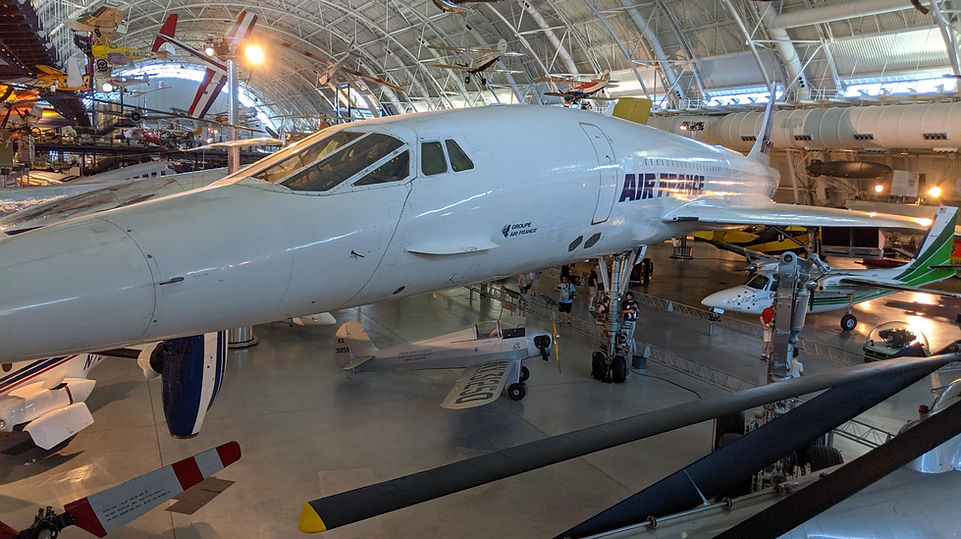
Concorde, Fox Alpha, Air France
(Click on Picture to Bring Up Full Image)

The Concorde was a groundbreaking supersonic passenger airliner jointly developed by British Aircraft Corporation and France's Aérospatiale in the 1960s. It first flew in 1969 and entered commercial service in 1976. Equipped with four Rolls-Royce/SNECMA Olympus 593 turbojet engines, which were the only commercial aircraft engines equipped with afterburners (reheat), providing the massive thrust needed to cruise at over twice the speed of sound (Mach 2.04), cutting transatlantic flight times in half. Only 20 aircraft were built, with British Airways and Air France operating them on prestigious routes between Europe and destinations like New York and Washington, D.C.
The aircraft featured a distinctive swept-back delta wing design and drooping nose that improved pilot visibility during takeoff and landing. Despite its advanced technology, the Concorde faced challenges, including high operating costs, limited range, and noise restrictions that confined it to overwater routes. After 27 years of service, both airlines retired their fleets in 2003 following the 2000 crash in Paris and declining passenger numbers. The Concorde remains an icon of aviation achievement and luxury air travel.
The Museum of Flight's Concorde was the eighth British-built production aircraft. It flew the final British Airways commercial Concorde service from New York to London on October 24, 2003, and it set a transcontinental speed record with a flight time of 3 hours and 55 minutes.
